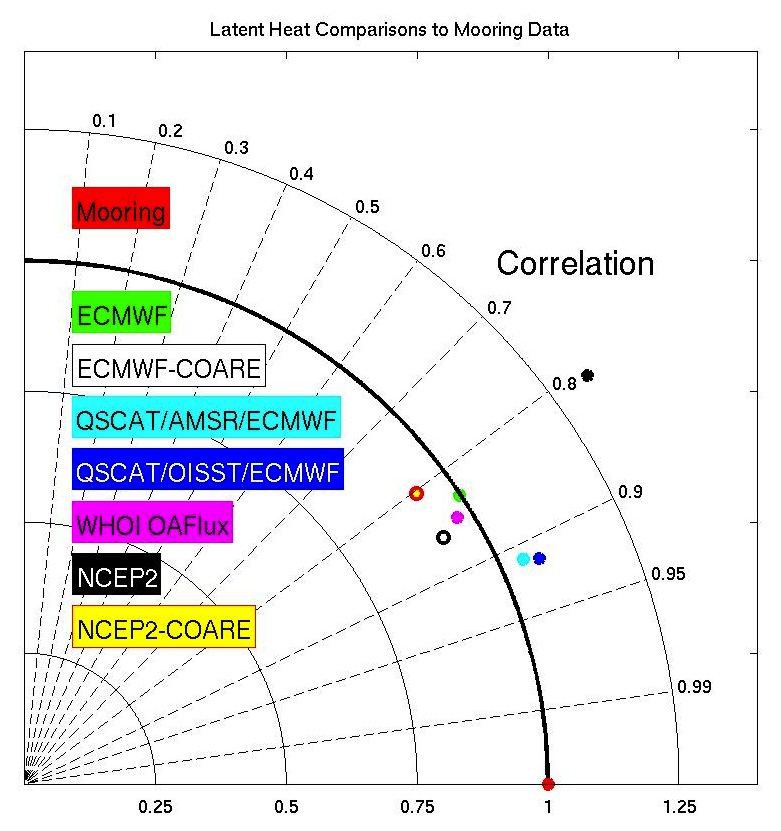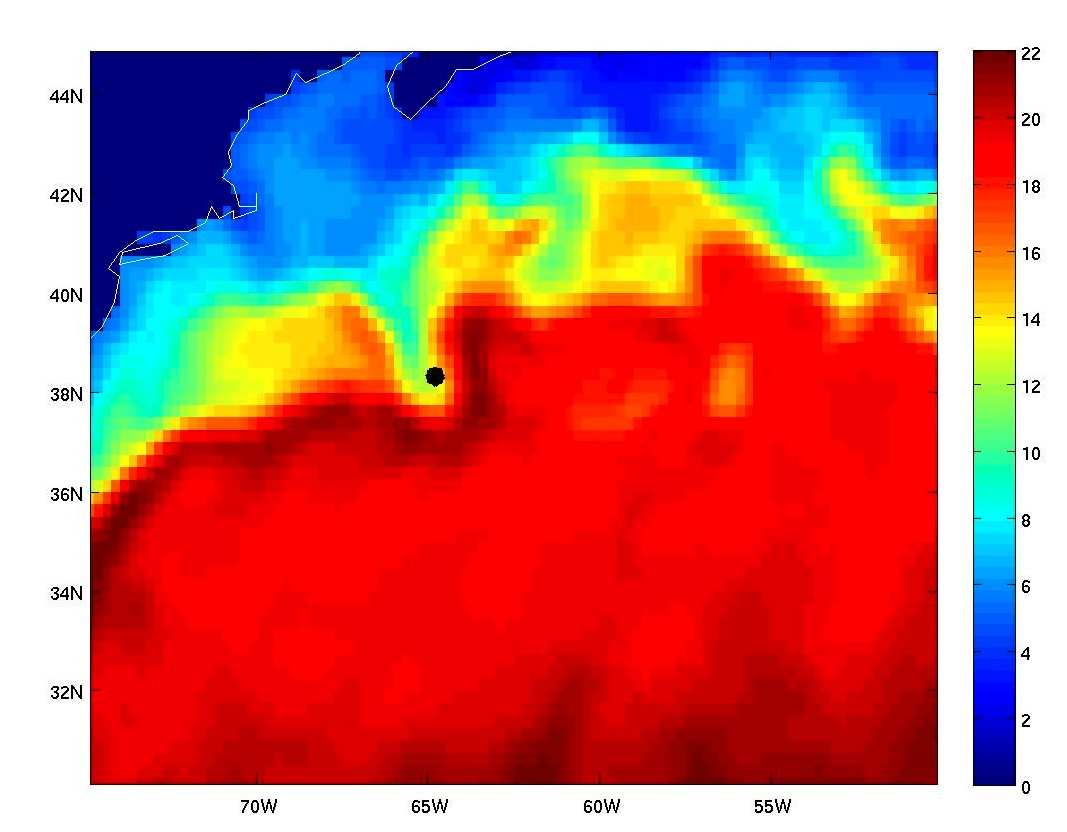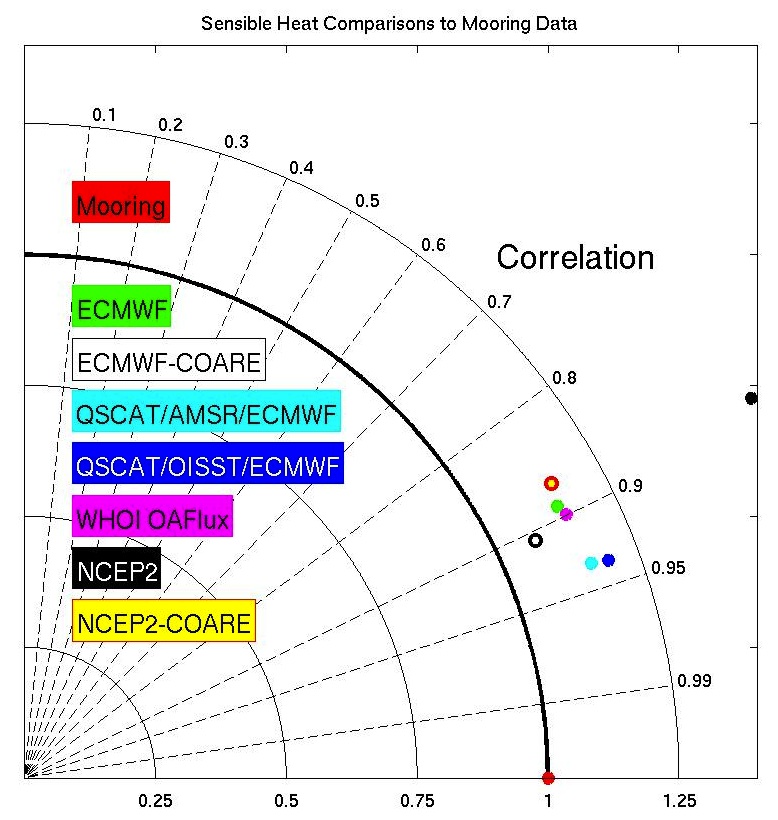 |
Latent Heat Comparison
The ECMWF latent heat product (green dot) has a correlation
of about 0.83 and the same relative magnitude as the CLIMODE
flux. When ECMWF geophysical variables are run through the
COARE algorithm (black circle), the correlation is
increased, the energy level is reduced, and the normalized
error is improved. The NCEP2 latent heat product (black dot)
has a very high energy level with a correlation of about
0.8. When NCEP2 variables are put through the COARE
algorithm (yellow dot rimmed with red), the correlation is
increased and the energy level is lower. The OAFlux product
(magenta) shows a correlation of about 0.85 with an energy
level comparable to the CLIMODE flux. Using the COARE
algorithm, two latent heat products using satellite data
were produced, using QuikSCAT wind speed and ECMWF air
temperature and humidity. The results are comparable using
either AMSR microwave SST (cyan dot) or NOAA OISST (blue
dot), which contains both microwave and infrared data, with
correlations above 0.9, an energy level a bit higher than
the observed, and low normalized errors. |


